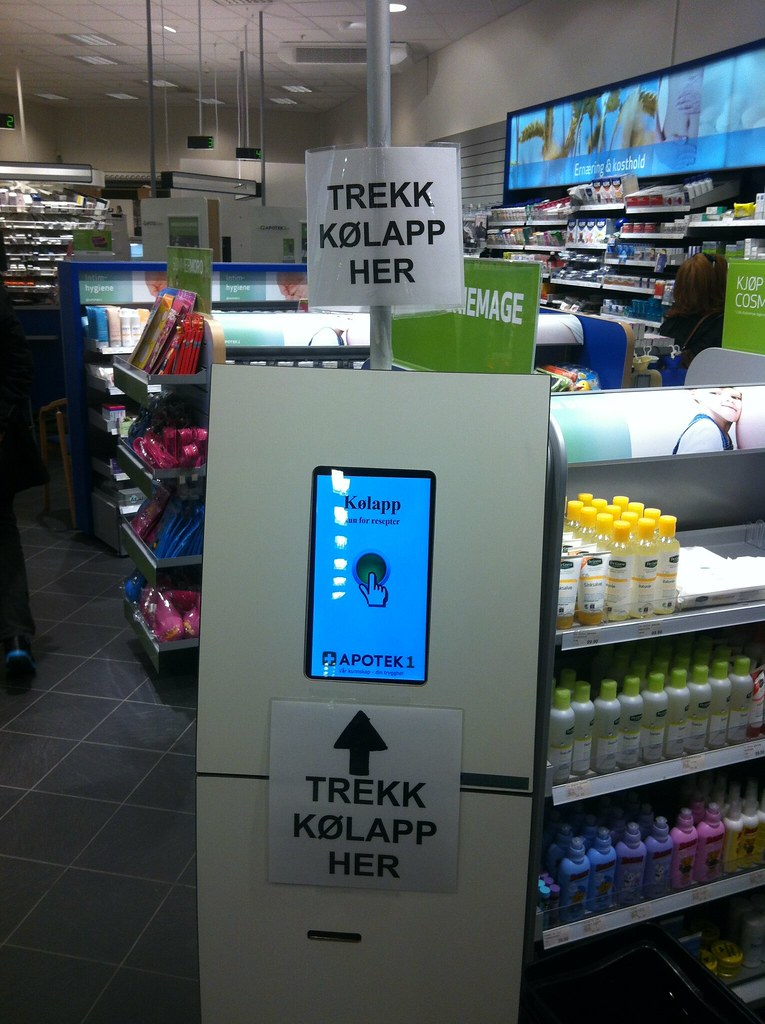Podcast: Play in new window | Download

Today’s interview is with Daniel Lind, Head of Business Development at Qmatic, a company who through its software and hardware is helping organisations manage their online and offline customer experience. Daniel joins me today to talk about the work that Qmatic are doing to help improve the customer experience, especially as it relates to waiting and getting better served.
This interview follows on from my recent interview: An organisational constitution improves employee engagement and customer experience – Interview with Chris Edmonds – and is number 127 in the series of interviews with authors and business leaders that are doing great things, helping businesses innovate, become more social and deliver better service.
Highlights of my interview with Daniel:
- 2 billion people pass through 60,000 Qmatic installations/system every year.
- Qmatic systems have been sold in more than 120 countries and they have more than 30 years experience in the customer service and customer experience arenas.
- The company was started by its founder when he saw that his restaurant customers were having a problem getting service, particularly when it came to queueing.
- Qmatic is working with organisations to help them bridge the gap between the online and the offline/physical customer journey and experience.
- Qmatic has helped some healthcare companies achieve great results including helping a hospital pharmacy reduce waiting time from 2 hrs to 15 minutes to a leading hospital, which reduced its operational costs at the reception area by 25%.
- This has been by looking at the whole customer journey for all types of patients/customers and identifying all of their different needs rather than just applying one generic journey to everyone.
- They use sophisticated mathematics to manage the ‘queues’ in their system and actually focus on servicing the ’short’ journeys before the longer and more complicated ones as this tends to be quicker, more efficient and reduces waiting times.
- They also used their system to make sure the right people with the right expertise see specific patients.
- The key is to capture the right ’need’ that the customer has at the beginning of their journey.
- They have also had great success in banking where they have worked with financial institutions and integrated their technology with their mobile banking apps. For example, the customer is able to do their day to day transactions via the app but if they have a more detailed question about a new product they can press a button and request a face to face meeting with the right ‘expert’ at the closest bank branch to them…..a bit like setting an appointment at the Genius Bar at an Apple store.
- The fall in Apple’s execution is that you still have to let someone know when you arrive in store for your appointment. In Qmatic’s system you can use an in-store kiosk or your mobile app to let the store or branch know that you have arrived.
- One of the challenges for banks is the balance between cost and engagement, particularly when around 35-40% of all current and savings account customers are not profitable.
- By making it easy to see the right bank personnel with the right skills and expertise, banks know that it drives traffic to the branch and increases their sales conversion and cross-sell rates.
- In the US, Qmatic has been able to help the Department of Motor Vehicles reduce waiting time from a few hours down to approx. 15 mins.
- In Kenya, they have helped used their citizen to also prevent ‘corruption’ in some departments where the system controls who the citizen or customer sees and not the officials.
- The big area that is overlooked is where the online experience crosses over and meets the physical experience, particularly within retail.
- Still 85% of all retails purchases are done within shops and not online.
- So, don’t forget the physical experience.
- It’s not enough to just train your staff to be nice and then leave it at that.
- There is a space for technology to help augment the physical experience.
- Technology will drive ‘transactional’ elements of customer experience online but we will rely more and more on human ‘experts’ to provide the more sophisticated elements of service, supported by technology, and much of this will be best done face to face.
About Daniel
 Daniel Lind is a seasoned business consultant with a strong track record of business process transformation working for small and large international companies. Daniel heads up Qmatic’s Business Development activities which includes their thought leadership platform, sales organisation development and their Customer Journey Discovery Programmes.
Daniel Lind is a seasoned business consultant with a strong track record of business process transformation working for small and large international companies. Daniel heads up Qmatic’s Business Development activities which includes their thought leadership platform, sales organisation development and their Customer Journey Discovery Programmes.
You can find out more about Qmatic at www.qmatic.com, connect with Daniel on LinkedIn here and say Hi to Qmatic on Twitter @qmatic.
Photo Credit: Kvisten via Compfight cc




